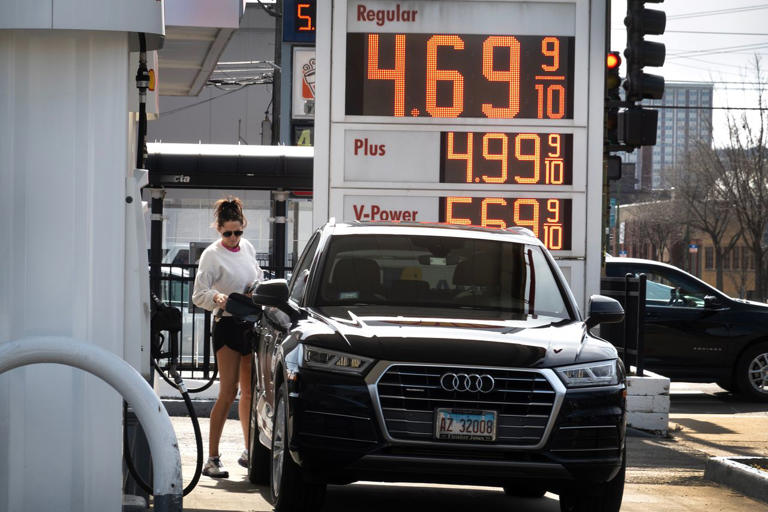The recent surge in gasoline prices across the United States is putting a strain on the budgets of American families, forcing them to reconsider their travel plans and everyday expenses. For Nic Malick, a resident of Kansas City, Missouri, the rising cost of fuel has significantly impacted his family’s ability to take leisure trips, with the prospect of spending an additional $20 per week on gas leading to a reassessment of their travel priorities.
Gasoline prices, which typically see an uptick in the first half of the year due to increased travel and changes in refinery production, have risen more sharply in 2024 compared to previous years. The national average for unleaded gasoline stood at $3.54 per gallon on Wednesday, marking a 3% increase from the previous year and a substantial 14% rise since the beginning of the year.
Regions such as Salt Lake City, St. Louis, and Chicagoland have experienced particularly rapid price hikes, with some areas seeing increases of over 50 cents per gallon in just one month. These escalating costs have contributed to a persistent inflationary trend in the first quarter, with gasoline and shelter expenses accounting for a significant portion of the Consumer Price Index’s rise.
The impact of rising gas prices extends beyond individual wallets, affecting broader economic sentiment and investor behavior. Energy investors on Wall Street anticipate further price increases, driven by factors such as production cuts by major oil-producing nations like Saudi Arabia and Russia, disruptions to refinery operations caused by severe weather, and geopolitical tensions affecting global fuel exports.
While these factors have propelled the profits of fuel-making companies and led to record-high share prices, they have also exacerbated concerns about the sustainability of price hikes and their potential long-term effects on consumers. However, some relief may be on the horizon, as refineries ramp up production and incoming supplies help alleviate supply shortages.
Looking ahead, the summer months could present additional challenges for fuel manufacturers, as heat waves and cooling system strains may impact operations and contribute to localized price spikes, particularly in regions with limited refining capacity. As consumers navigate these uncertainties, the future trajectory of gasoline prices remains uncertain, contingent upon a range of economic, geopolitical, and environmental factors.
